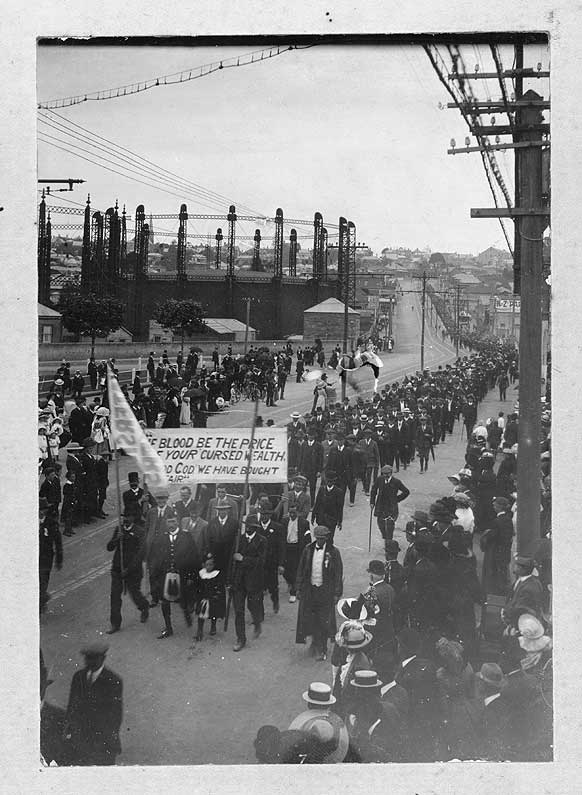 Anticonscription demonstration, Melbourne, c1916
Anticonscription demonstration, Melbourne, c1916
TLF ID R3028
This is a black-and-white photograph measuring 15.5 cm x 10.9 cm, of a street demonstration against conscription, taken during the First World War. It shows a long line of marchers, including two men carrying a banner inscribed 'IF BLOOD BE THE PRICE OF YOUR CURSED WEALTH, GOOD GOD WE HAVE BOUGHT IT FAIR'. The line of marchers snakes through a fairly industrial part of Melbourne - a gas storage tank looms in the background.
